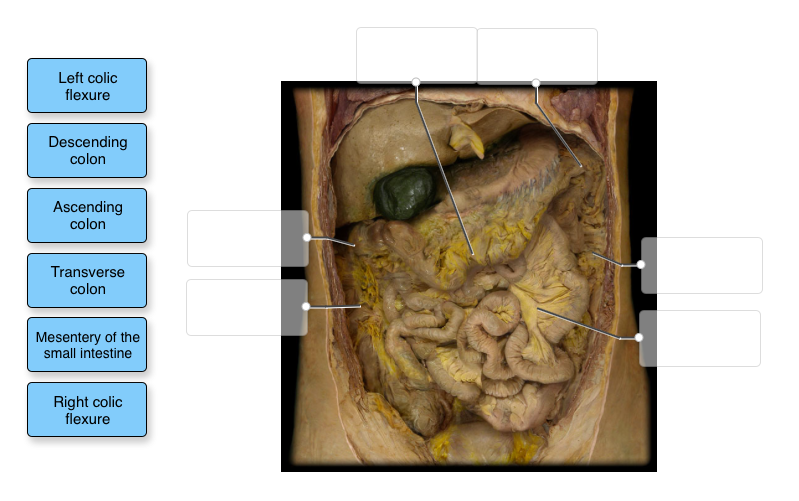

The sigmoid colon passes down into the pelvic cavity: there's a lot of it down there, which we'll bring out.Īs it passes into the pelvic cavity the sigmoid colon approaches the midline. The sigmoid colon forms a large freely mobile loop that's attached by this double sheet of peritoneum, the sigmoid mesocolon. A little below the iliac crest, which is here, the descending colon is continuous with the sigmoid colon.

Just like the ascending colon, it's fixed to the posterior abdominal wall. The splenic flexure lies just below the spleen, and in front of the left kidney, which is back here.īelow the splenic flexure is the descending colon. With the colon in its natural location the splenic flexure is out of sight, right up here. The splenic flexure lies just below the spleen, and. The transverse colon ends higher and even further back than it started, at this sharp downward turn, the left colic flexure, or splenic flexure. The two structures are connected, as we've seen, by the part of the greater omentum that's known as the gastro-colic ligament. The transverse colon hangs down in a curve that's parallel to the greater curve of the stomach. This is the divided root of the mesentery. It crosses the head of the pancreas, which is here, and also the duodenum, which is here. We'll take the transverse colon out of the picture to see its attachment. The real attachment of the transverse colon, which we can see when we pull it upwards, is this double sheet of peritoneum, the transverse mesocolon. The omentum isn't he real attachment of the transverse colon: it's only loosely adherent to it. In its natural location it's partly hidden by the geater omentum that clings to its anterior surface. Here the transverse colon has been pulled upward, along with the greater omentum. The transverse colon crosses the abdominal cavity from right to left. The hepatic flexure lies just below the lowest part of the liver, and the gall bladder, and in front of the lower part of the right kidney, which is back here. The ascending colon ends a long way back at this sharp 90° turn, the right colic flexure, or hepatic flexure. It's held in place by the peritoneum of the posterior abdominal wall, which covers it on the front and sides.


 0 kommentar(er)
0 kommentar(er)
